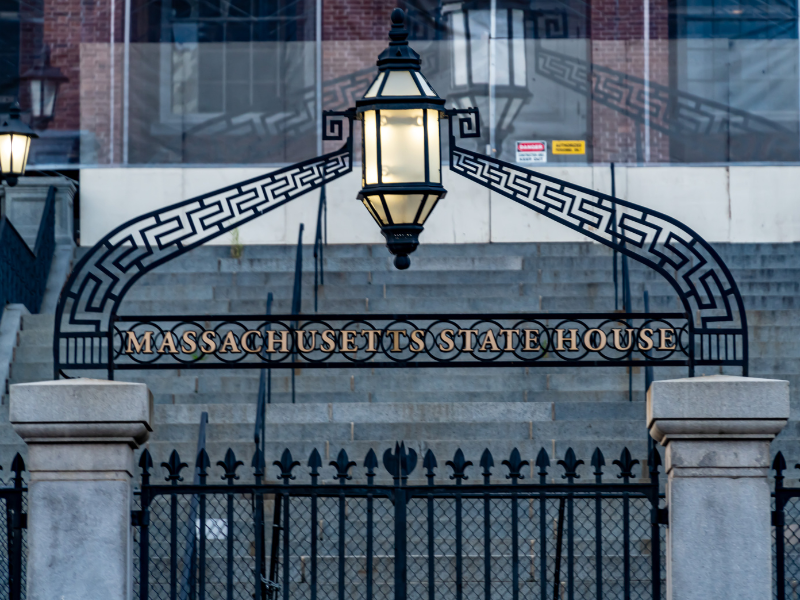Last week, Gateway City leaders appeared at the State House to testify in support of An Act to Promote School-Centered Neighborhood Development. The hearing was an important milestone in our campaign to help education, housing, and community development leaders coordinate strategies to build mixed-income neighborhoods and schools.
The seeds of this effort trace back to our 2022 report, Choosing Integration. The study detailed the growing segregation of students in Massachusetts and outlined how this pattern is a major contributor to widening achievement gaps. Creating more opportunities for students to attend suburban schools is an important remedy, but intentional efforts to build desirable mixed-income neighborhoods and schools in urban areas are equally critical. Without a balanced response, desegregation efforts will weaken urban neighborhoods and leave many students behind in schools with high concentrations of poverty and limited resources.
In the fall of 2023, we assembled a small group of Gateway City leaders in Worcester to gather insights on how communities work intentionally to build neighborhoods with strong, economically integrated schools. Over the next 12 months, we met regularly with these leaders and subject-matter experts from across the country. The Massachusetts School-Centered Neighborhood Development (SCND) Playbook was the product of these conversations. This first-of-its-kind white paper provides a high-level overview of the strategy, and it makes the case for vigorously pursuing the approach in Boston, Gateway Cities, and other communities that want to create environments for children and families that are both opportunity-rich and inclusive.
To explore how cities implement these efforts on the ground, we have spent the past six months learning from communities around the country with practical experience. In April, we visited Houston for an up-close look at the work of Purpose Built Communities, a national nonprofit that helps cities large and small build mixed-income neighborhoods and schools. In May, we attended the National Community Schools Conference in Minneapolis. There, we spent time with thousands of educators who have successfully led Community Schools. This collaborative and neighborhood-oriented school design is a central component of SCND.
The final stop on the learning journey leading up to last week’s bill hearing was just across the river in Cambridge. In July, the Harlem Children’s Zone’s William Julius Wilson Institute (WJWI) held a conference at the Kennedy School. Working in close partnership with Paul Reville’s team at the Harvard EdRedesign Lab, WJWI is helping states adopt policies to replicate the tenets of the Harlem Children’s Zone, a leading example of what SCND can achieve for neighborhoods, students, and families.
Maryland was first out of the gate. The state has long been at the vanguard of the Community Schools movement. With leadership from Governor Wes Moore, it is building on this foundation. Last year, the Maryland General Assembly passed the ENOUGH Act, which provides $15 million to help launch place-based initiatives in high-poverty neighborhoods. Already, this modest state investment has leveraged $100 million from local and national philanthropy.
At the hearing, Gateway City leaders urged the Legislature to borrow from the Maryland model to help communities across Massachusetts adopt this powerful approach. The bill sponsors, Rep. Antonio Cabral and Sen. Pavel Payano, began by describing how the legislation establishes a fund to blend state resources with investments from private philanthropy. These dollars will help neighborhoods come together and build strong community buy-in around a plan. They will also provide startup capital for a neighborhood backbone, a dedicated nonprofit that will lead and sustain efforts to implement this plan over the long-term.
Gateway City leaders provided powerful examples of how this approach could make a major difference. Remarks from Xiomara DeLobato, vice president of the Western Massachusetts Economic Development Council, stood out. She gave a concise rundown of how linking efforts to improve education and housing and boost economic mobility build “ecosystems of opportunity” and neighborhoods where “families want to stay, businesses want to grow, and students can see a future for themselves right where they live.”
Watch the testimony from the hearing including Xiomara DeLobato and other SCND leaders.
The Joint Committee on Community Development and Small Businesses, chaired by Springfield Sen. Adam Gomez and Haverhill Rep. Andy Vargas, responded positively to the testimony. They and other members had many thoughtful questions. Several asked about the relationship to Community Schools and how the legislation will support efforts to launch more schools with this neighborhood-oriented design. Legislators also asked about our new research on school buildings in Massachusetts, and what steps we can take to ensure that the Massachusetts School Building Authority is empowered to partner more holistically, when it invests in urban neighborhoods with high concentrations of poverty.
The questions and enthusiasm from committee members show that there is considerable energy for policies that recognize neighborhoods matter. With student achievement falling sharply for our least well-served students, state government must do more to help communities find strategies that make their neighborhoods and schools stronger for everyone.
